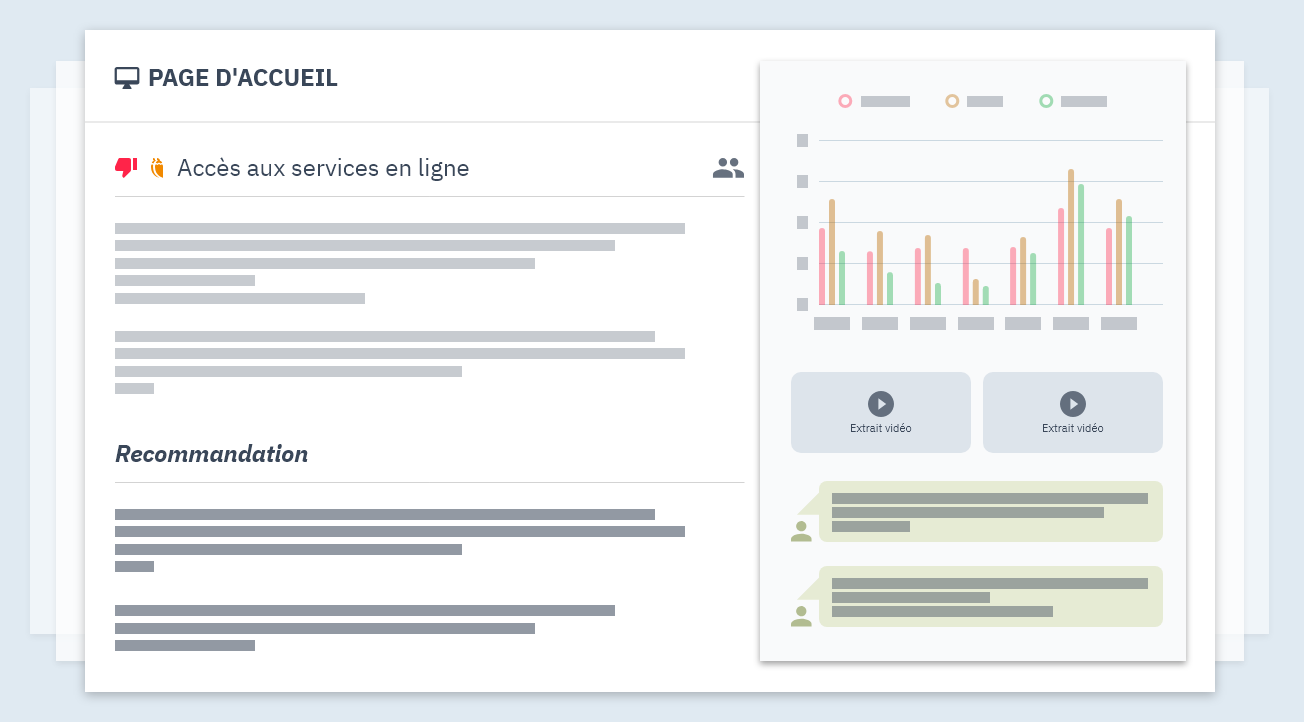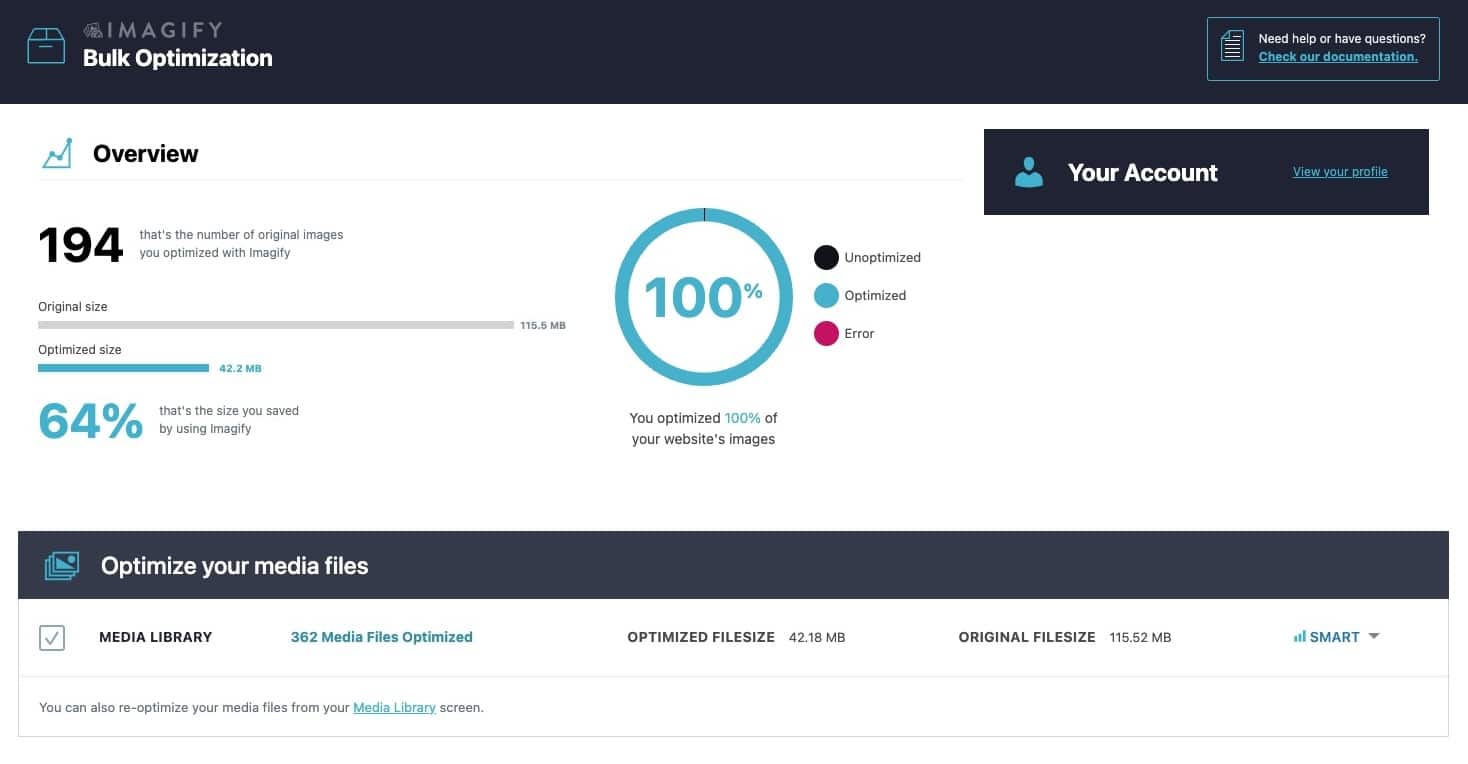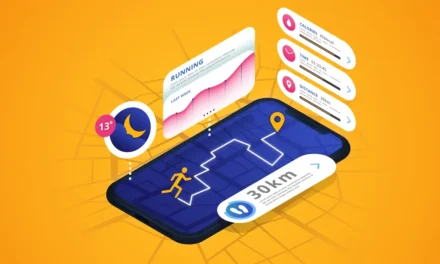The good health of a company on the web is measured by figures. For example, you can see exactly how many people arrive on your site, when and where they come from.
However, the number of visitors is not the only measure of the success of your web design. What happens once they arrive on your site also has a great influence on the development of your online business. The longer the visitors remain on your site, the more likely you are to bring them to conversion.
But what will hold them longer on your site? Aesthetic and attractive web design. In this article, we will share the ultimate checklist for an aesthetic and profitable design of your website.
What makes web design effective?
Effective website design makes it possible to ensure that The site achieves its objective.
For example, if you have a blog, the design must help make content and the reading experience more pleasant for readers.
However, each website requires different elements to make its design more effective. Here is an overview of best practices in web design:
- Conviviality: All functions and components must be accessible and easy to use.
- Organized structure: The organization of web pages must be logical to allow visitors to easily find the information they need.
- Readability: Typography, colors and layouts must make the content pleasant to read.
- Aesthetic coherence: All pages must use the same design elements to maintain visual harmony, brand identity and ease of use.
- Speed optimization: Each design element must have a function that benefits the user and the objective of the website. There can be no redundancy which could have an impact on the loading time and on your efforts in terms of SEO.
The ultimate web design checklist for an aesthetic and profitable website
A successful web design project is not content to give an attractive aspect to your website, it also allows you to reach your commercial objectives, whether conversions or increased traffic. Here's how to hit the bull's eye with this checklist:
1 – Set your goals
Without a specific objective, your design team will not be able to develop an adequate strategy. Suppose, for example, that it began to design a website without objective. It ended up creating an aesthetically pleasant site, but failed to target the right audience. Will the design of this site lead to conversions? Certainly not!
Here is how to clarify your goals by answering the following questions:
- What is your business doing? What value do you bring to your customers?
- What problem will your site solve? What is your final goal? Is it a better SEO ranking or educating your current customers?
- Who are your competitors? How are you different from them?
2 – Analyze your existing website
If you already have a website, it is best to first carry out a detailed analysis of it.
It can be to question users to understand their journeysto organize a brainstorming session with your team to know their suggestions, or carry out an audit of the competition To determine the elements and trends of the website on which they capitalize. This will help you find the strengths and weaknesses of your current site and determine what you need to update or modify when redesigning.
For example, during the brainstorming session, your customer service representative may tell you that he has received many comments on navigation problems on certain web pages. You can take note of it and ask your designers to tackle this problem.
3 – Research your users
Understanding your users is essential to know how your web design will help them solve their problems or achieve the objectives they have set.
Once you know more about them, continue your research to validate the first ideas with your target audience. They will provide you with invaluable information on the good design to adopt. For this, you may use surveys, interviews and discussion groups to better understand your users and know whether your design meets their specific needs.

This research can also be carried out by professionals, such as the Churchill agency, web design expert.
4 – Plan the layout of your site (and make it responsive)
Start with an overview and become more precise as you go. Here's how to proceed:
- Your web design tool will probably give you access to pre -built templates. Start by determining if you can customize a model or if you need to start from scratch. Browse the templates at your disposal to assess their quality and see if they correspond to the vision you want to give to your site. However, it is desirable to Promote a 100 % tailor-made design which will allow you a significant room for maneuver in the creation/overhaul of your website.
- Decide with your team of designers pages that must appear on your site : It may be your home page, your “About” page, your product or service pages or the pages that will be used for payment.
- Browse some sites that seem inspiring you In order to find ideas. Some web design models can also work very well for your site. Why not reproduce it?
- Make (on the fly) a model of each pageensuring that elements such as headers, navigation menus, call-to-action, forms or even the feet are clear, easily navigable and respect the usual design models and codes in terms of design.
5 – Establish your brand image
Your website must reflect the vision of the product or service you sell.
Use a coherent brand image so that customers, when they arrive on your home page, immediately include the appearance and function of your site. Here are some elements to take into account absolutely before the start of the design of your site:
- Logo: If you don't have a logo yet, create one for your website. Websites like Canva or Snappa can help you in this task if you do not have the skills and/or the necessary budget.
- Typography: Select the fonts you want to use on your site, but stay simple. Choose a maximum of three and stand in fonts commonly used for the web, like Arial, Verdana and Tahoma. In this way, your site will be easily readable and you will avoid display problems.
- Color palette: You've probably already chosen the colors of your brand when designing your logo. Use the principles of color theory and study the brand image of your competitors to decide other colors to use on your site. Ideally, your website should not have more than three or four colors.
6 – Source and optimize your images

One of the most common errors in web design is to include poor quality, redundant or poorly sized images that are bored, confusing and even irritate users. The images of your website must capture attention, give life to your brand and create a lasting impression. Here are some tips to follow:
- Create your own images: Do not use sites with loose photos and do not reuse visuals from elsewhere. You will get better results if you take your own photos or if you order illustrations that really represent your brand.
- Be intentional: Do not put images everywhere on your site without reason. Only include relevant, significant images that bring value to your customers.
- Correct the images correctly: The too large and too heavy photos are one of the main causes of the slowness of the sites. This harms the user experience and increases the rebound rate. Tools such as jpeg optimizer and compressor.io can help you optimize your photos for your. The ideal remains a compression of images in .webp format, image format privileged by Google due to a light weight which allows you to maintain good image quality. This compression can be carried out for example via the Imagify plugin.
7. Write an attractive text and in accordance with your brand image
Writing the perfect text for a website can be a delicate balance exercise: quality content must be detailed enough to meet the specific needs of users and communicate the identity of your brand, but not too long not to appear boring, tedious or out of words.
A good text allows customers to be informed about your products and helps them to establish closer links with your brand, which is why it is essential to do things well. How to do it? Start by getting to know your customers. Empathy for your users in order to tackle their problems in your texts. What else?
- Use a spelling and a tone that will speak to your customers. This will help you write coherent and user -centered texts.
- Write in a specific purpose : Avoid the superfluous and make sure that each sentence has value or is useful.
- Decompose your text In titles, subtitles, quotes, lists and short paragraphs so that it is easy to travel.
- Do not forget to perform a rereading of all of your texts before their online.





